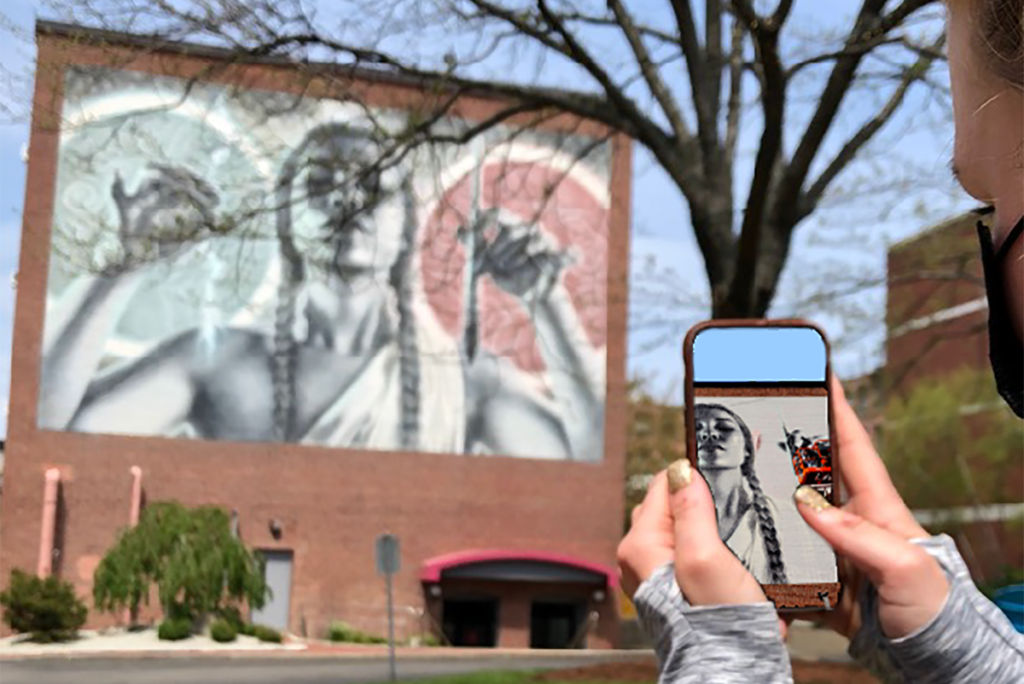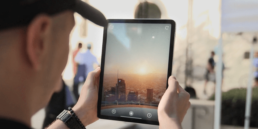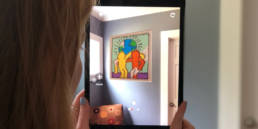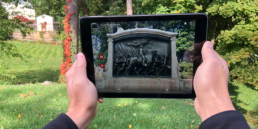Augmented Reality for Schools, Universities & Colleges
With the emergence of Augmented Reality (AR), schools, universities, and colleges now have access to a new medium to engage and communicate with students, faculty, staff and guests while on campus. From opening day, throughout semesters, and during final graduation events, campuses and buildings can now hold curated visual digital content which can be used to inform, educate, showcase, and communicate with anyone at that location. Students, faculty and staff use AR platforms like Hoverlay to tell stories about student life, provide campus tours, virtually interact with school leadership, or showcase skills learned in classes.
In the middle of the COVID pandemic, Northeastern University deployed Augmented Reality experiences during their 2021 commencement celebration. Four different locations were chosen to convey congratulatory messages to students, using a mix of videos, and holograms based on green-screen videos. Experienced through their phone while on the campus, these augmented locations made for a memorable, interactive, and fun event for students and their families.
Augmented Reality Storytelling – Defining Concepts
The commencement events started on May 3rd with graduate and undergraduate students walk during which they were able to witness campus murals “come to life” and to have an AR photo op with a hologram of University’s President Joseph E. Aoun. Advanced and Alumni Relations staff approached two talented students, Erin Mittmann and Ashley Knehans to help develop their AR vision for the graduation.
The pair met with Northeastern’s Public Art Manager Thomas Vannatter to discuss his concept for two of Northeastern’s most well-recognized murals, “Joy” by Silvia López Chavez and “Ars et Scientia” by El Mac. With a storyboard in hand, Ashley and Erin got to work recording, animating, programing, and testing all the elements needed to build the Processional Parade AR Experience. It is important to mention that AR is not new to Northeastern University. Hoverlay AR publishing platform has been taught in Associate Teaching Professor David Tamés’s classes for last several years.
Augmented Reality Experience – Creation Process
Ashley used Photoshop to prepare images of the two large-scale works, correcting colors and removing objects obscuring the murals. She had to digitally “cut out” all the moving pieces in order to animate. After creating individual layers of each bubble and radiating sunbeam, content was ready for animation. Most of the animations were created in After Effects, however, Ashley generated the lightning bolt for the El Mac mural in 3D animation software called Houdini. Once the animations were exported, it was Erin’s role to place them at campus using Hoverlay.
For many use cases, individuals can get started with Hoverlay without any AR training or coding experience. However, accurately sizing animations for two massive outdoor murals was a bit more complicated task. The mural “Joy” is approximately 50 feet tall and about double in width. Erin had to think about the size of AR experience on a smartphone screen and its relation to distance from the user.
Augmented Reality animation launched via Hoverlay from a contemporary mural “Ars et Scientia” by El Mac at Northeastern University campus.
Using Hoverlay to Place and Share Content at Campus Locations
Hoverlay uses objects in the real world as landmarks or markers for its digital projections. The main subject of “Joy” mural, a woman blowing bubbles, could act as a reference point. When the camera aligns with the figure, it prompts Hoverlay to display an animation. But, part of the mural is painted on windows, which changes color in the rain versus the sun. If the landmark looks different, then the AR will have to “guess” how to display the animation. Diligent testing and foresight helped Erin avoid any forecast-related glitches.
“Joy” a contemporary mural at the entrance of the MBTA train stop augmented with animations via Hoverlay.
Despite managing the plethora of moving parts associated with creating the two mural animations, Erin also saw an opportunity to enhance the graduation walk even further. It was her idea to use the magic of green screen video to create a computer-generated President Aoun’s hologram for the event. The green screen videos with the president were made a week before the ceremony. Normally, he would shake hands with each student as they crossed the stage during Commencement. Safety and health restrictions make that impossible this year. Augmented Reality offered a hashtag-worthy solution. Students used the Hoverlay camera browser across the campus for a truly memorable camera shot with Northeastern’s president.
Northeastern University President Aoun – from a green screen video to a welcoming Augmented Reality hologram at the campus.
For both Ashley and Erin, it has felt pretty great sharing knowledge of AR with the rest of the university. Preparing their own graduation celebration was an honor and an opportunity to show their friends their work in person. It was fun to watch other students hold up their phones and see the murals come to life. In her final year at CAMD, Erin is looking forward to future AR and virtual reality projects while Ashley plans to apply for visual effects jobs as a CG generalist or VFX artist.
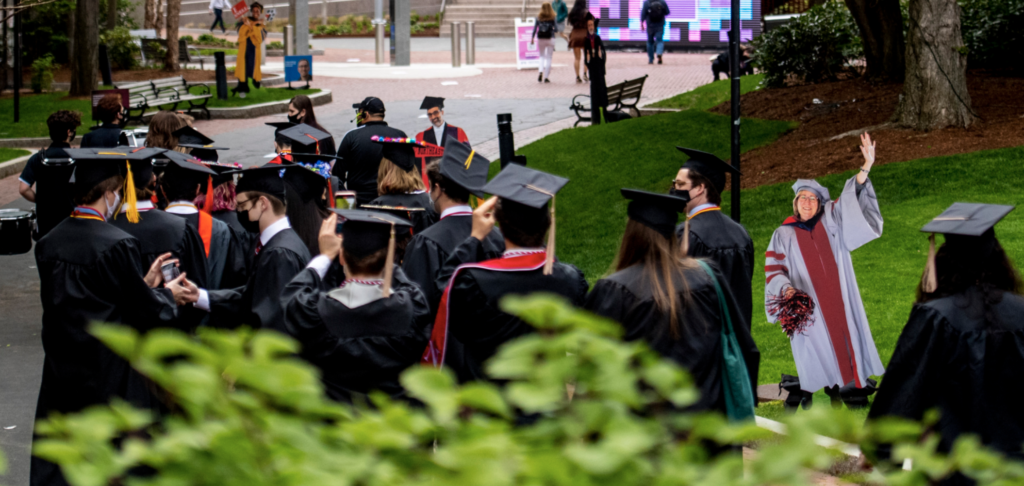
Northeastern 2021 graduates holding up their phones to experience Augmented Reality at the campus (Photo by Northeastern University)
Learn more about Hoverlay augmented reality platform for public spaces and education. Find out more about Hoverlay featured augmented reality channels.

